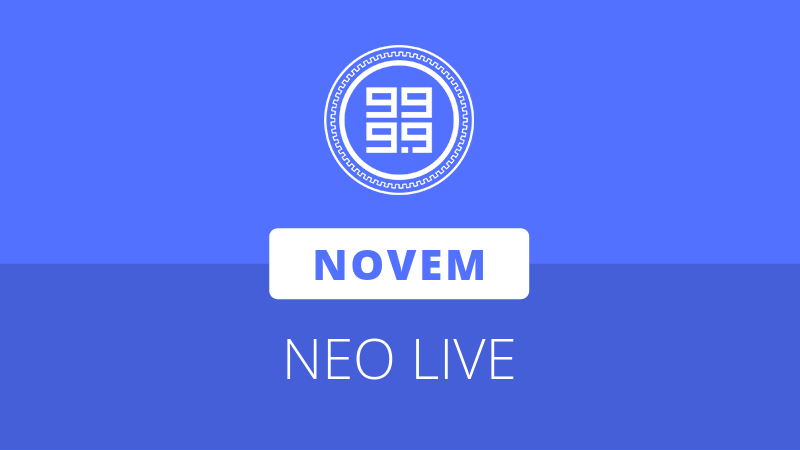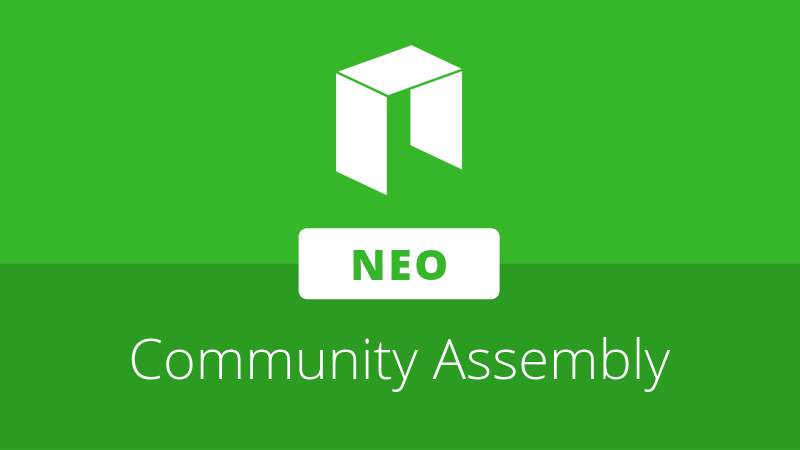
NEO recently hosted the “NEO Powers Up Berlin” community meetup in Berlin, Germany to discuss NEO’s history, current status, and updates on NEO3. At the event, attendees received presentations by NEO co-founder and NEO Global Development (NGD) CEO, Da Hongfei, director of ecosystem growth, John Wang, and NGD blockchain engineer, Longfei Wang. After the presentations, the three NEO representatives took part in a community question and answer session.
Da Hongfei delivered the first presentation, which was entitled “The Next Phase.” Da first discussed NEO’s beginning as Antshares, and its primary focus on digital assets and digital token issuance. He then went on to describe today’s current internet, and how web3/next-generation internet will be decentralized. In the next-gen internet, Da envisions a stack of four layers:
- Layer 0: Content Neutral Network (network protocol and cloud services)
- Layer 1: State and Settlement (NEO, other public blockchains, centralized global ledgers)
- Layer 2: Transaction (state channels, side/cross-chains, local ledger)
- Layer 3: Application (browsers, apps, dApps)
Da said, in between Layer 1 and Layer 2 there will be modules comprised of digital identity, distributed storage, and an oracle, which is among the functionalities slated for NEO3. Additionally, NEO will provide functionality for state channels and side/cross-chain interoperability. Da went on to outline NEO3, which he summated by saying the new blockchain “will be easier for developers.”
Da highlighted the current amount of assets under management by the NEO Foundation. As of the previous financial report, the NEO Foundation manages US $440 million in NEO and GAS assets, and US $12 million in BTC, ETH, USD, and RMB assets. Da iterated that the NEO Foundation doesn’t own these assets, but instead manages and uses them to build and foster the NEO ecosystem.
Among other topics, Da outlined statistics and figures for the NEO blockchain. Today, 70% of the top 50 exchanges list NEO, GAS, and NEP-5 assets, and more than 30 wallets now support NEO. Lastly, Da claimed the NEO blockchain currently witnesses about 50,000 daily transactions, and its dApps see about 10,000 daily active users (DAU).
EcoBoost
Following Da, John Wang delivered a presentation outlining NEO’s dual token model, milestones achieved over the past three years, and more than 100 projects in the NEO ecosystem.
J. Wang went on to offer an overview of the NEO EcoBoost program and NEO’s aim to provide life cycle support for all projects in the NEO ecosystem. The EcoBoost program aims to provide financial assistance, help projects list on exchanges, provide seed users for dApps with wallets, and promote projects through different channels, among others.
The presentation concluded with a discussion about the 50 projects that joined the first phase of the NEO EcoBoost Program.
Developer Experience
The next presentation, delivered by Longfei Wang, was entitled the “NEO Dev Experience” and offered insights into the technical development details of building on the NEO blockchain. To provide a good developer experience, NEO offers tools, comprehensive documents, a developer guide, tutorials, and FAQs.
The NEO Toolkit for Visual Studio – expected to launch in September – aims to provide a one-click tool, which NGD Seattle lead, John deVadoss, calls the “F5 Experience.” The NEO Toolkit is designed to help developers easily set up a private net, explorer, and a compiler to deploy and test smart contracts. Currently, the Toolkit offers support for the C# programming language.
L. Wang also touched upon NEO3, of which the first TestNet preview is tentatively scheduled to be released soon. Lastly, NEO plans to implement an “early adopter plan” to attract developers to build tools and projects to build on top of the new NEO3 blockchain.
Question and Answer Session
Following the speeches, the three presenters took the stage to answer questions from the members of the audience. The following sections are recaps of some of the questions asked.
Consensus Nodes
Regarding today’s state of the network, Da envisions the optimal number of consensus nodes will range between seven and 50.
Regarding decentralizing the nodes and voting, Da noted that NEO currently holds 43% of the NEO token supply and the majority of the voting weight. However, NEO will gradually lose that voting power over the coming years as it distributes the coins to community developers and projects. Eventually, users will be able to vote on the number of consensus nodes in the network.
Today, there are two ways to become a consensus node. First, become highly recognized in the community and receive community approval. Second, communicate directly with NEO Global Development, so that they may evaluate motivation, technical ability, track record. Then, the NEO Foundation can vote on the applicant to run a consensus node.
NeoID
One participant asked about the purpose of NeoID, and if Ontology is working on an identity solution as part of the recent cross-chain interoperability protocol development partnership.
Da noted that NeoID is only applicable to the NEO blockchain, as developers building on other blockchain protocols won’t use NeoID. If the developer is building other blockchains, and they seek a universal solution, it might be in their interest to use Ontology or other digital identity solutions.
NeoID and NeoFS will only be used for NEO-based smart contracts, not any other public blockchain protocol.
NeoFS
A member of the audience pointed to other decentralized storage systems and a lack of good user experience. How does NEO seek to create a well suited decentralized, distributed file storage system?
L.Wang responded that the developer team seeks the ability to store data and information on their network. Though, the team can’t attest to the speed and structure as compared to other file storage projects, because NeoFS hasn’t been delivered yet.
Da stated that “NeoFS isn’t as sexy as IPFS, it’s not one-solution-fits-all.” Which, is OK, as NeoFS meant to be used solely by NEO blockchain; it’s not a universal distributed storage solution.
L.Wang went on to say that NeoFS will launch “very soon.”







About The Author: Dylan Grabowski
Dylan is a reformed urban planner with a passion for covering the Neo ecosystem. His objective as a writer for Neo News Today is to report news in an objective, fact-based, non-sensational manner. When not behind a computer screen, he can be found in the mountains rock climbing. Find Dylan on Twitter (@GrabowskiDylan).
More posts by Dylan Grabowski